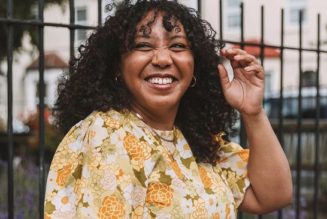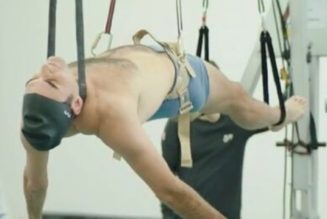Breadcrumb Trail Links
Expert believes the couple can retire this year, but only if they maintain their existing spending

Reviews and recommendations are unbiased and products are independently selected. Postmedia may earn an affiliate commission from purchases made through links on this page.
Article content
By Mary Teresa Bitti
James* and his wife Lillian would like to retire at the end of 2024, but only if they can ensure they are able to enjoy a lifestyle that affords them the ability to enjoy trips to Europe and Asia each year and not feel financially constrained.
Article content
In the past few years, Lillian, who will turn 60 this year, has scaled back to work from home on a part-time basis, which provides her flexibility and a healthy work-life balance. She earns about $25,000 a year.
Advertisement 2
Story continues below
Article content
James, 67, who has built a highly successful career advancing research and advocacy both in the private and public sectors, has also pared back his consulting projects and works about 30 weeks a year, earning a pre-tax annual income of $196,100. His current net monthly income is $8,426 (combined, their current monthly net income is $11,123, but their average monthly expenses are $11,993).
However, the grind and hassles of extensive work-related travel are taking their toll on James. If he has to, he could take on consulting work.
Lillian recently learned she is eligible for a defined-contribution pension valued at $109,570, which is invested in a balanced fund, and wonders if she should move the funds to money market, equity or bond funds.
“It was unexpected and feels like ‘found’ money,” she said.
James is eligible to collect a public-sector pension this coming fall. It is a contributory defined-benefit pension plan indexed to inflation and will pay an estimated $30,028 (before tax) per year. However, it will pay an estimated $50,225 if he continues to work until he’s 70, and $62,677 if he works until he’s 72.
Article content
Advertisement 3
Story continues below
Article content
“At that point, my wife will be 63 and we will still have some good years ahead of us to enjoy retirement,” he said.
The couple is based in Saskatchewan, and recently downsized and purchased a home valued at $850,000 for their retirement years. They have a $430,000 mortgage at a fixed rate of 2.74 per cent that matures this December.
This spring, they have a loan receivable that will come due worth $113,000. This money will be used to pay down 10 per cent of the mortgage (the allowable annual extra payment) and double-up payments going forward.
The couple’s investment portfolio is worth about $2.3 million (with unrealized capital gains of some $400,000 or so), which is invested largely in equities (about $1.94 million) in registered accounts and managed by a bank-run brokerage.
The portfolio includes $1.35 million in registered retirement savings plans (RRSPs). Both accounts are invested largely in North American equities, mutual funds and guaranteed investment certificates at five per cent. James and Lillian each have tax-free savings accounts (TFSA), worth a combined $256,896, and he has a locked-in retirement account worth $347,827.
Advertisement 4
Story continues below
Article content
The couple also has a non-registered investment account worth $154,000, with unrealized capital gains of $80,000, largely invested in banks and technology companies.
“From a tax-planning perspective, I don’t know what to do with it,” James said. “Is there a way to roll it into a TFSA?”
James has not applied for Canada Pension Plan (CPP) benefits because he does not know the economic pros and cons of collecting them at ages 60, 65 and 70, nor is he sure how to maximize Old Age Security (OAS) and the Guaranteed Income Supplement benefits while avoiding or minimizing clawbacks.
What the expert says
Ed Rempel, a fee-for-service financial planner, tax accountant and blogger, believes James and Lillian can retire this year, but only if they maintain their existing spending, including the nearly $10,000 a year they spend on travel, which would require an annual income of $185,000 before tax.
“To support their desired lifestyle, which includes $15,000 a year or more for travel to Europe and Asia, they would need about $208,000 a year before tax or $2.7 million in investments, assuming a long-term rate of return of about 7.2 per cent before they retire and 6.5 per cent after they retire,” he said. “They only have about $2.3 million. To get on track, they should work two more years until age 70 for James and 62 for Lillian.”
Advertisement 5
Story continues below
Article content
However, Rempel believes a bit of creative tax planning can help. Specifically, he suggests the couple consider a strategy called the Singleton Shuffle (named after a court case) to make their mortgage tax-deductible, which would free up money for travel and to invest.
“In December, James and Lillian could pay off their mortgage using their non-registered investments, a $113,000 loan receivable and some of their TFSA funds, then immediately borrow it back to buy similar investments — all non-registered,” he said. “They would have the same investments and mortgage — there is no real benefit to doubling up payments — but the mortgage interest would be tax deductible. This would allow them to save $15,000 a year before tax and give them about $10,000 a year more after tax.”
With respect to Lillian’s pension, Rempel said their best option is to move it to where most of their investments are and invest based on their risk tolerance.
“Don’t think of it as ‘found money,’” he said. “There is sometimes a tendency to want to spend it on one big purchase. They should think of it as part of their retirement nest egg.”
Advertisement 6
Story continues below
Article content
Rempel said delaying CPP from age 60 to 65 provides a similar extra income for life as a 10.4 per cent per year return on investments, but delaying it from 65 to 70 is an implied return of only 6.8 per cent.
“With their given asset allocation of 80 per cent equities/20 per cent fixed income, Lillian should wait to age 65 to start,” he said. “James should start his CPP as soon as he retires.”
Rempel also recommends they convert their RRSPs to registered retirement income funds (RRIFs) when they retire and start taking the minimum withdrawal or a bit more. That would give them $92,500 each per year, so OAS clawbacks won’t be an issue because the clawback is 15 per cent on taxable income of more than $91,000 a year.
Recommended from Editorial
To do this, he suggests they take their pensions and most of the difference from their RRIFs to give them about $85,000 a year in taxable income each. Then withdraw about $10,000 a year from their non-registered investments to get to their desired retirement cash flow.
Advertisement 7
Story continues below
Article content
“They should not withdraw from their TFSAs and should continue to transfer $7,000 a year into each of their TFSAs from their non-registered investments, so that they can make them all tax free over time,” he said. “To be tax-efficient, they should invest their non-registered investments all in equities or equity mutual funds, and then keep the fixed income portion sheltered inside their RRSPs.”
* Names have been changed to protect privacy.
Are you worried about having enough for retirement? Do you need to adjust your portfolio? Are you wondering how to make ends meet? Drop us a line at aholloway@postmedia.com with your contact info and the general gist of your problem and we’ll try to find some experts to help you out while writing a Family Finance story about it (we’ll keep your name out of it, of course).
Bookmark our website and support our journalism: Don’t miss the business news you need to know — add financialpost.com to your bookmarks and sign up for our newsletters here.
Article content












Comments